New research finds that cuttlefish display human-like intelligence characteristics. Something called delayed gratification, like avoiding that box of cookies while you wait to cook dinner. These squid relatives may be smarter than they look!
Schnell, A.K., Boeckle, M., Rivera, M., Clayton, N.S., & Hanlon, R.T. Cuttlefish exert self-control in a delay of gratification task (2021). Proceedings B, Royal Society Publishing, 288: 20203161, https://doi.org/10.1098/rspb.2020.3161.
Cute & Smart
You may have heard of cuttlefish, a lesser known cephalopod and relative to the octopus and squid, with an adorable name. These marine molluscs have “W” shaped pupils, 8 arms, and 2 longer specialized arms called tentacles which have suckers to grab prey. Cuttlefish are unique because they have an internal shell called the cuttlebone, which helps control their buoyancy and can often be found washed up on the beach. A cuttlefish has a relatively short lifespan of less than two years and lives a quiet life with a simple social circle. They have the marvellous ability to camouflage and often use this to assist in foraging for prey. Despite their size of only 15-50 cm, cuttlefish have been distinguished for their intelligence. Cuttlefish have been shown to use memory to assist with foraging and even have shown advanced navigational skills.
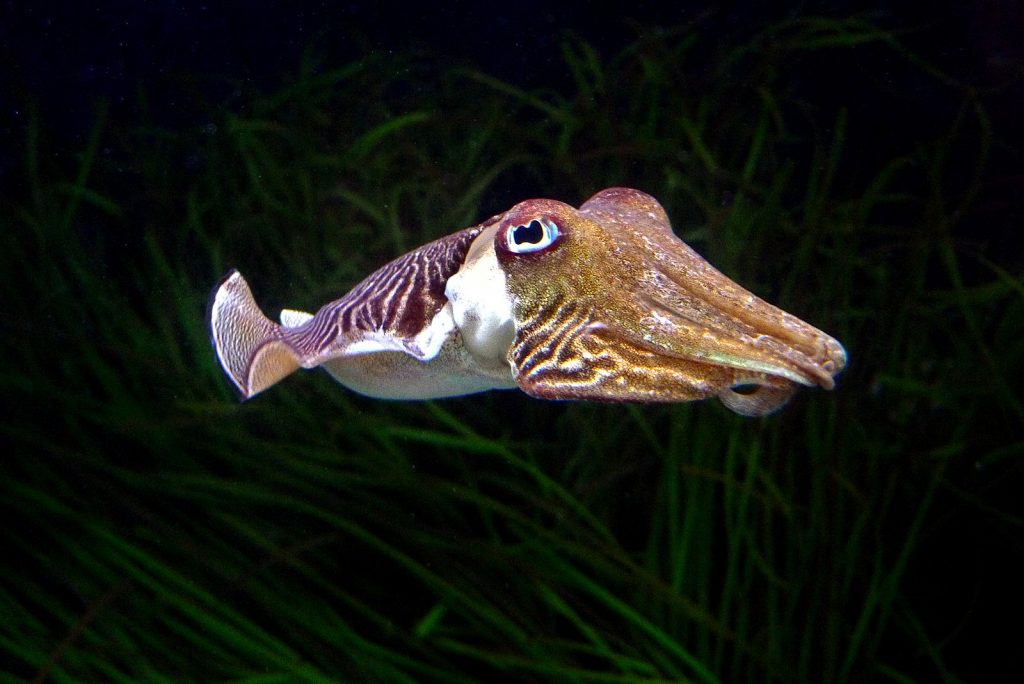
Scientists wanted to look deeper into the cuttlefish’s intelligence and cognitive abilities. The scientists were inspired by the “marshmallow test”, which is a 1960’s experiment that presented children with 1 marshmallow and the suggestion to wait a period of time in order to get TWO marshmallows. The study produced often hilarious results (only 30% waited) and also demonstrated the ability of delayed gratification or self-control, meaning waiting in order to gain a better reward. Self-control has been linked to intelligence as it shows evidence the study specimen is able to plan for the future and make decisions. The ability to delay gratification or show self-control has been shown in “smart” animals like apes, crows, and parrots, while failing animals include rodents, chickens, and pigeons.
Putting Cuttlefish to the Test
A scientist from the University of Cambridge and her colleagues tried a similar experiment with six 9-month old common cuttlefish, swapping out the marshmallow for more delicious crustaceans. They first determined what the cuttlefish’ favourite food was between live grass shrimp, live Asian shore crab, or dead/raw king prawn. The cuttlefish all preferred live grass shrimp the most and did not prefer Asian shore crab and raw king prawn.
Then, a two-drawer device with clear sliding doors was used to show the cuttlefish each option: the preferred and less preferred prey. The doors were marked with symbols which over time the cuttlefish were trained to recognize. One of the drawers would open immediately and contain the dead and less appetizing king prawn. The other drawer, containing the delicious live grass shrimp, would either open after another 10 to 130 seconds, or not open at all. The cuttlefish were placed individually at a distance from the drawers in an aquarium and had to decide. There was the option to, at any time, stop waiting and eat the less preferred food as its door was clear. But, once they approached one chamber, the other would disappear, teaching them that they could only chose one! Would they be willing to wait for the preferred prey, and for how long?
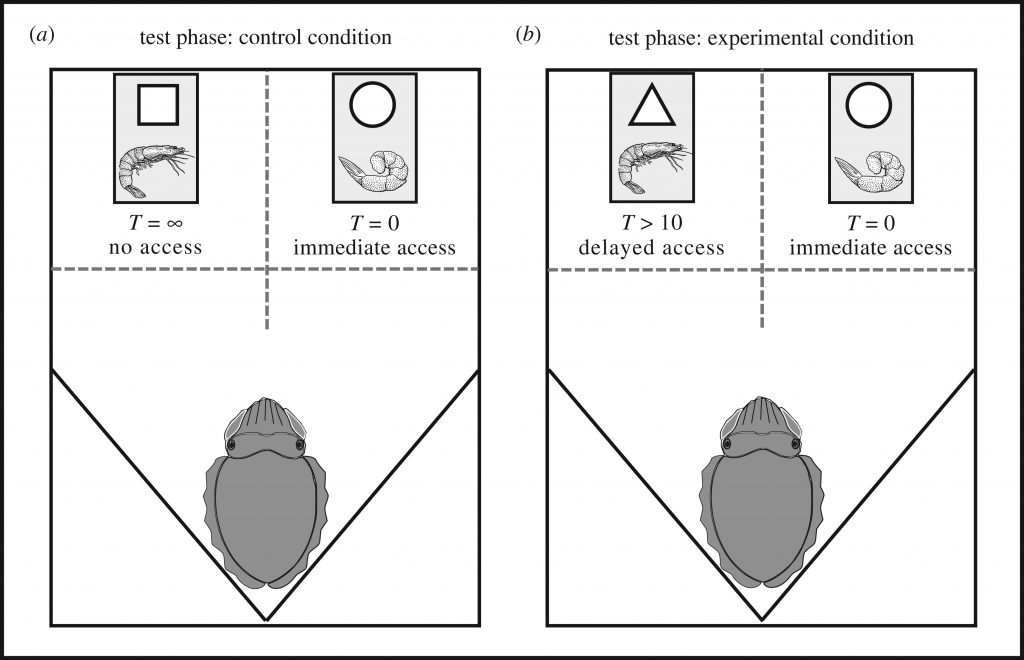
Cuttlefish Will Wait
Cuttlefish were found to wait from 50 to 130 seconds for the drawer filled with yummier prey. When the only options were a live shrimp that never opened or a dead shrimp, they chose the dead shrimp.
Cuttlefish are the first invertebrate to show self-control by passing this version of the “marshmallow test”!
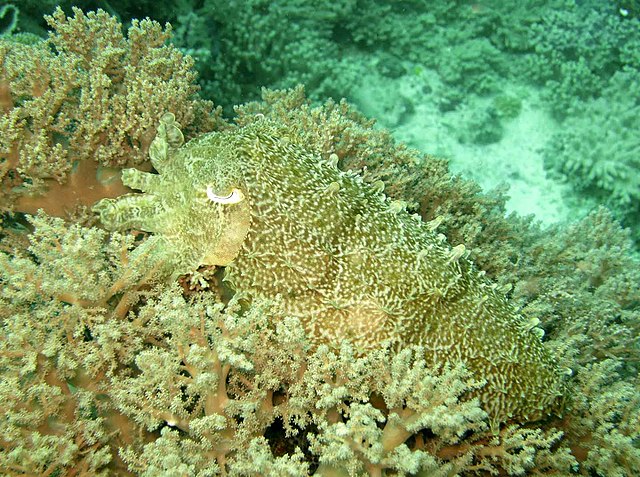
This level of self-control was previously only found in long-lived social animals like apes and crows. At some points during the experiment, the cuttlefish would even turn their bodies away from the prey, as if to distract themselves to handle the delay of gratification. Also, the more self-controlled cuttlefish also were faster at learning symbols during the experiments, showing that delay of gratification equates to intelligence (so hold off on that dessert!).
So why were cuttlefish so good at resisting temptation? Although self-control has been shown to help apes and crows for social reasons, cuttlefish live a simpler life without strong social activities. Instead, scientists hypothesize delayed gratification is a way cuttlefish can improve their foraging behaviours. Since cuttlefish camouflage and ambush their prey, self-control could make them more successful foragers as they make smarter decisions like waiting patiently for better prey. If a cuttlefish can outsmart a child, they should be respected and studied for their intelligence as it may hold connections to our own evolution.
I have always been happiest in nature – exploring forests, traveling to the ocean, or working with wildlife. After obtaining my MSc in Marine Environmental Management at the University of York, I have worked in conservation and marine science around the world. I have a special affinity for corals, cuttlefish, and cetaceans.
The sea, once it casts its spell, holds one in its net of wonder forever. – Jacques Cousteau

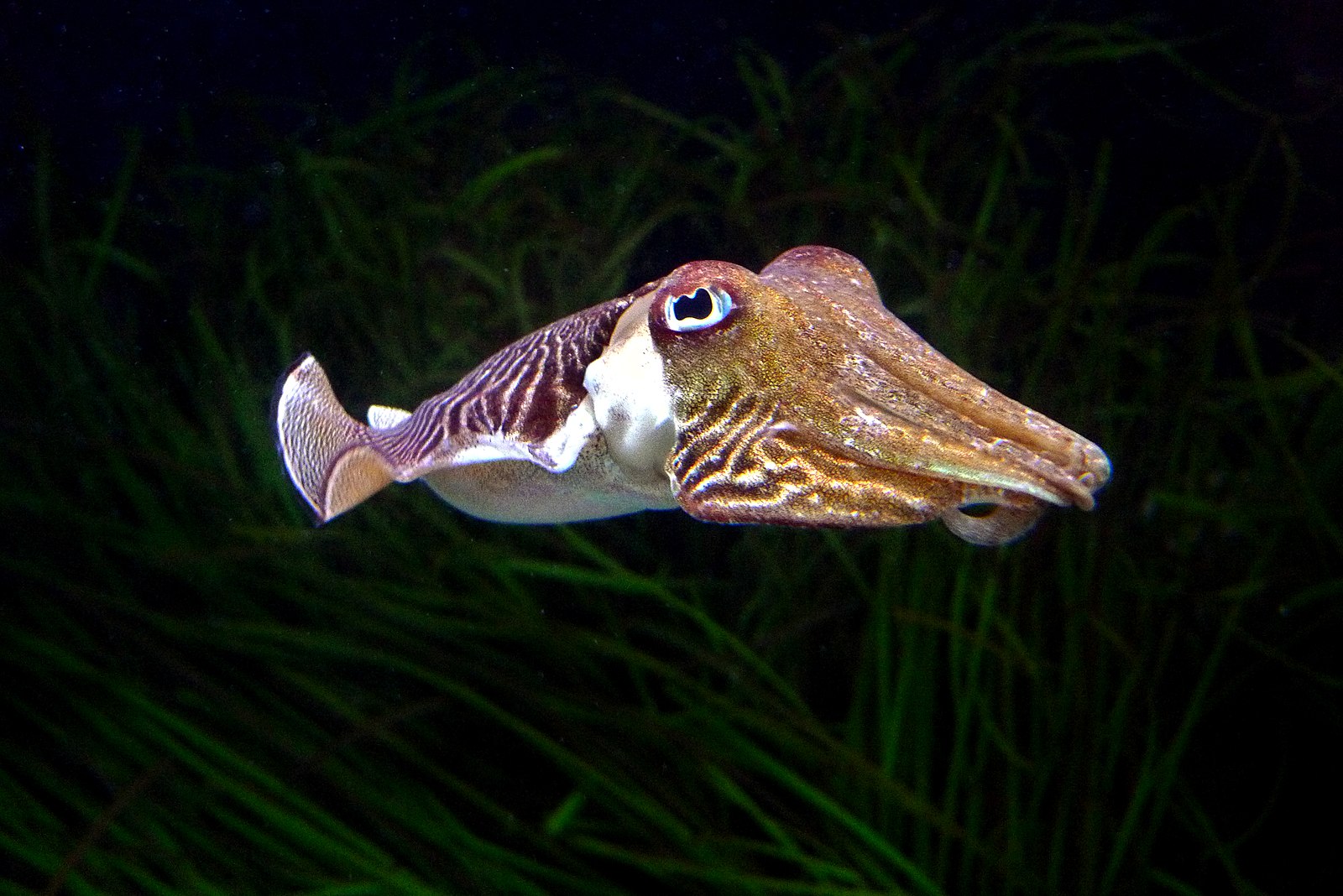
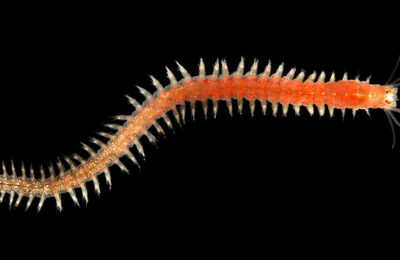
Sounds like the Cuttlefish is smarter than my own kids!
Hello
Excellent read , especially found the camouflaging capabilities the most impressive . Also Interesting was their ability to resist temptation . Good job I also have an affinity to cuddle fish ;-)
Chris
Thanks Chris! Glad you were ‘hooked’ by the article :)